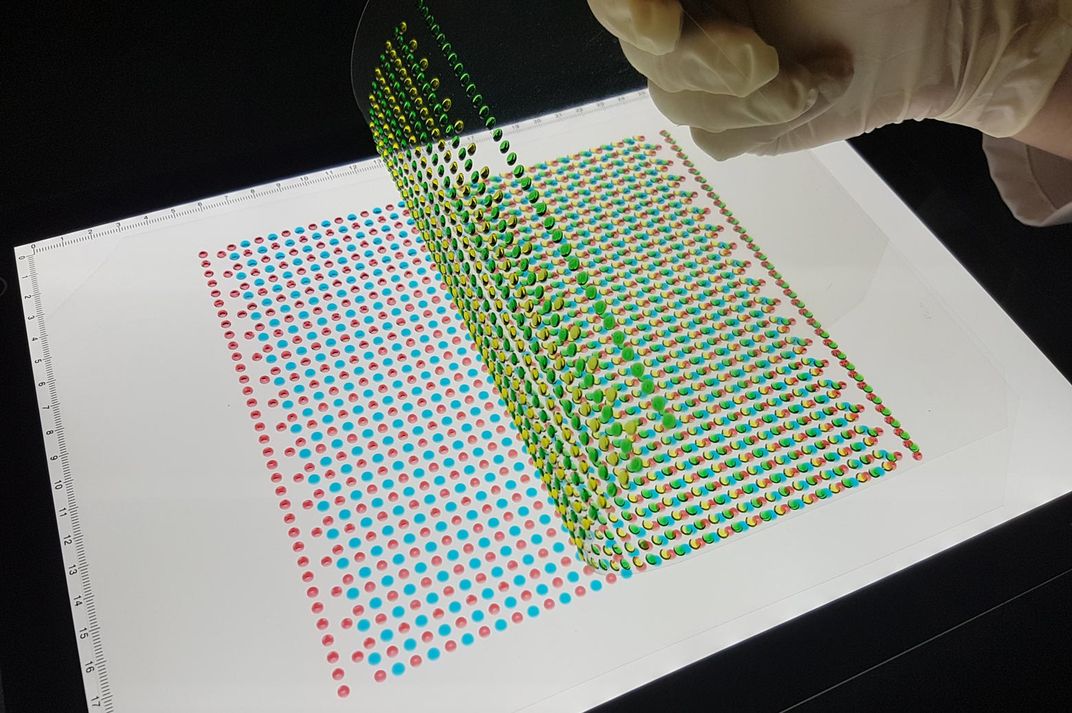Electric Eels Inspire a New Type of Battery
Researchers took a cue from the electric eel to create a soft, foldable battery that could one day power devices like pacemakers
/https://tf-cmsv2-smithsonianmag-media.s3.amazonaws.com/filer/59/53/595352ca-7d38-4476-a751-8909357d6453/electric-eel.jpg)
Electric eels, which slither along the muddy bottoms of ponds and streams in the Amazon and Orinoco river basins of South America, can cause a shock powerful enough to knock a horse off its feet. Their power comes from cells called electrocytes that discharge when the eel is hunting or feels threatened.
Now, researchers are taking inspiration from these eels (not technically eels, as a matter of fact, but a type of fish) to develop new power sources that could one day power electrical devices in the human body, such as pacemakers, sensors and prosthetic organs.
Electric eels can synchronize the charging and discharging of thousands of cells in their bodies simultaneously, says Max Shtein, a materials scientist at the University of Michigan who worked on the research.
“If you think about doing that very quickly – [in a] mere fraction of a second – for thousands of cells simultaneously, that’s a rather clever wiring scheme,” he says.
The electrocytes of an electric eel are large and flat, with hundreds stacked together horizontally. Because of the way they’re stacked, the cells’ tiny individual voltages add up to a significant kick. This is possible because the surrounding tissue insulates the electrocytes so the voltage flows forward to the water in front of the fish – stunning or killing prey or threats – then flows back to create a complete circuit.
A team led by Shtein's collaborator Michael Meyer at the University of Fribourg tried to copy the eel’s physiology by creating about 2,500 units made of sodium and chloride dissolved in water-based hydrogels. They printed out rows of tiny multicolored buttons of hydrogels on long sheets of plastic, alternating the salty hydrogels with ones made just with water. They then printed out a second sheet of charge-selective hydrogels, each one allowing either positively charged sodium or negatively charged chloride gels to pass through. When the sheets were folded, using a special origami technique, the alternating gels touched and generated electricity. The system generated 110 volts – a decent jolt, but far less than the power output of an eel, which has thinner, lower-resistance cells.

The team, which also included researchers from the University of Fribourg and the University of California, San Diego, wrote about their prototype in the journal Nature last month.
The hydrogel system is soft and flexible, which could make it a potentially good power source for soft-bodied robots whose movements would be impeded by hard batteries. It’s also free from the potentially toxic ingredients of traditional batteries, such as lead. And since the system is made from artificial components rather than biological tissue, it has a low potential for immune rejection.
The researchers hope they can up the system’s power by making the hydrogel membranes thinner. They also hope to mimic the eel’s ability to use its own bodily fluids to maintain differences in electrolyte concentration between electrocytes. This could make it possible to permanently power an implanted device without external input.
“The beauty of electric eel bio-batteries is that the principles by which they work are simple and the charged particles that move to generate current are easily available—essentially just ions in solution like in table salt—that occur naturally in our bodies,” says Harold Zakon, a professor of neuroscience at the University of Texas at Austin who studies electric eels. “Since electric organ cells are charged by moving ions across cell membranes, they would never have to be plugged into the wall or an external power source, but would rely on the body’s own energy to keep them charged.”
/https://tf-cmsv2-smithsonianmag-media.s3.amazonaws.com/accounts/headshot/matchar.png)


/https://tf-cmsv2-smithsonianmag-media.s3.amazonaws.com/accounts/headshot/matchar.png)